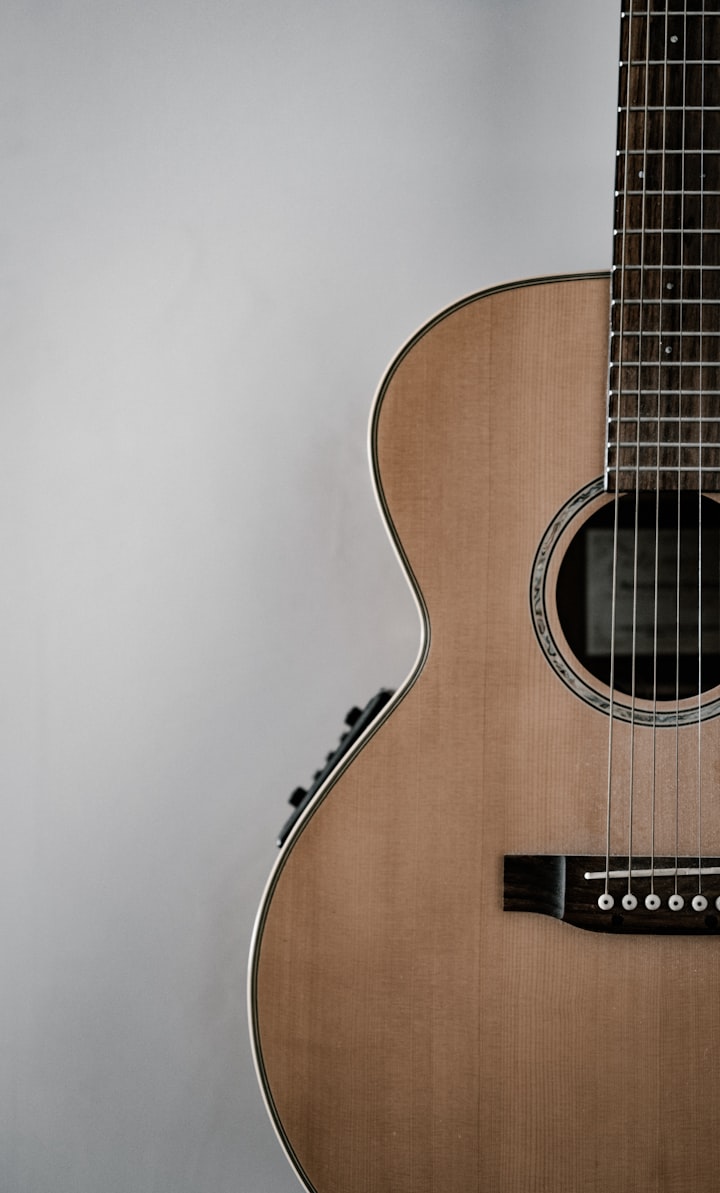
Here are some tips that will help you get started playing acoustic guitar using a plectrum. This guide is for the beginner guitarist who wants to achieve both emotional fluidity and technical precision.
There are several elements involved in learning the acoustic guitar. The general posture should have the guitarist seated in a relaxed manner without slouching over the instrument, making body weight a constant obstacle to freedom of movement. This should be taught at the very beginning of every guitar lesson, but there are other aspects of the relationship between guitar, arm While the left hand plays its part without too much attention, the right hand is responsible for changing the angle of attack with the pick, moving between the bridge and the rosette for sound effects and applying pressure. variables on the strings. The acoustic guitar player's right hand is responsible for expressing feeling and sound quality in their playing. For this reason, you should get into the habit of practicing slowly, in a relaxed manner. Trying to play fast will only result in poor sound and the introduction of bad muscle habits into your guitar playing.
Another basic characteristic of right hand guitar technique is precision. Sacrificing speed for accuracy when training will eventually allow you to include both elements in your game. It depends on how much practice you do each day, but half an hour a day of relaxed, careful practice is better five hours of repeated music playback at full speed in the hope that everything will be fine in the end. It won't be.
An effective way to continue improving your technique is to imagine a scale passage or chord change as a series of movements that follow each other naturally. If you play a scale using up and down strokes, you may find that there is a tense moment as you move from string to string. So go back and analyze how you transition between strings.
A free acoustic guitar lesson
Is it more natural and comfortable to keep alternating strokes when changing strings, or is it better to play two low strokes in a row? Maybe the tension is a result of your hand changing the angle of play as you move from string to string? It's an approach that doesn't appeal to the impatient person in all of us who wants quick progress. The reality is that paying attention to all the little details will make our playing smoother and help us become quick pickers or chord changers.
It is natural for a beginner to play single notes using all down strokes, but it is essential to get into the habit of alternating up and down strokes whenever possible. Once the game has become second nature, you'll be able to mix and match shots for more speed and accuracy depending on the demands of individual ladder runs.
A question for some novice acoustic musicians is whether to anchor the right hand or let it float freely above the guitar. Many acoustic guitarists anchor their right hand to the body of the guitar by resting their little finger on the pickguard. This is supposed to give a permanent "base" to the right hand so that it can maintain a center of gravity as it moves between the strings. Some guitarists anchor the heel of the right hand behind the bridge of the guitar. This has the disad The guitarist's right hand must have the freedom to move between the bridge and the rosette in order to achieve a range of tonal sounds. If the pick is near the bridge, the sound will be bright and dry. If the hand is close to the sound hole, the sound will be deep and soft. You could follow the example of guitarists who don't anchor their right hand at all. This gives the most freedom and most guitarists find that they don't need an anchor point to help them find their way around the strings.
These are basic components of the acoustic guitar that will allow your playing skills to develop naturally until you can adapt to a number of styles and quickly learn a wide range of right hand techniques and the left hand vantage of limiting the range of motion of the right hands and hands.





Comments (1)
Playing music, whether it's singing, playing an instrument, or composing, offers a wide range of physical, emotional, cognitive, and social benefits. Here are some of the key advantages of playing music: 1. Enhances Cognitive Abilities: Playing music involves complex mental processes, such as reading sheet music, recognizing patterns, and coordinating multiple actions simultaneously. It has been linked to improved memory, concentration, and problem-solving skills. 2. Emotional Outlet and Stress Relief: Music provides a means of emotional expression. Whether you're playing an instrument or singing, it can help you release emotions, reduce stress, and promote relaxation.